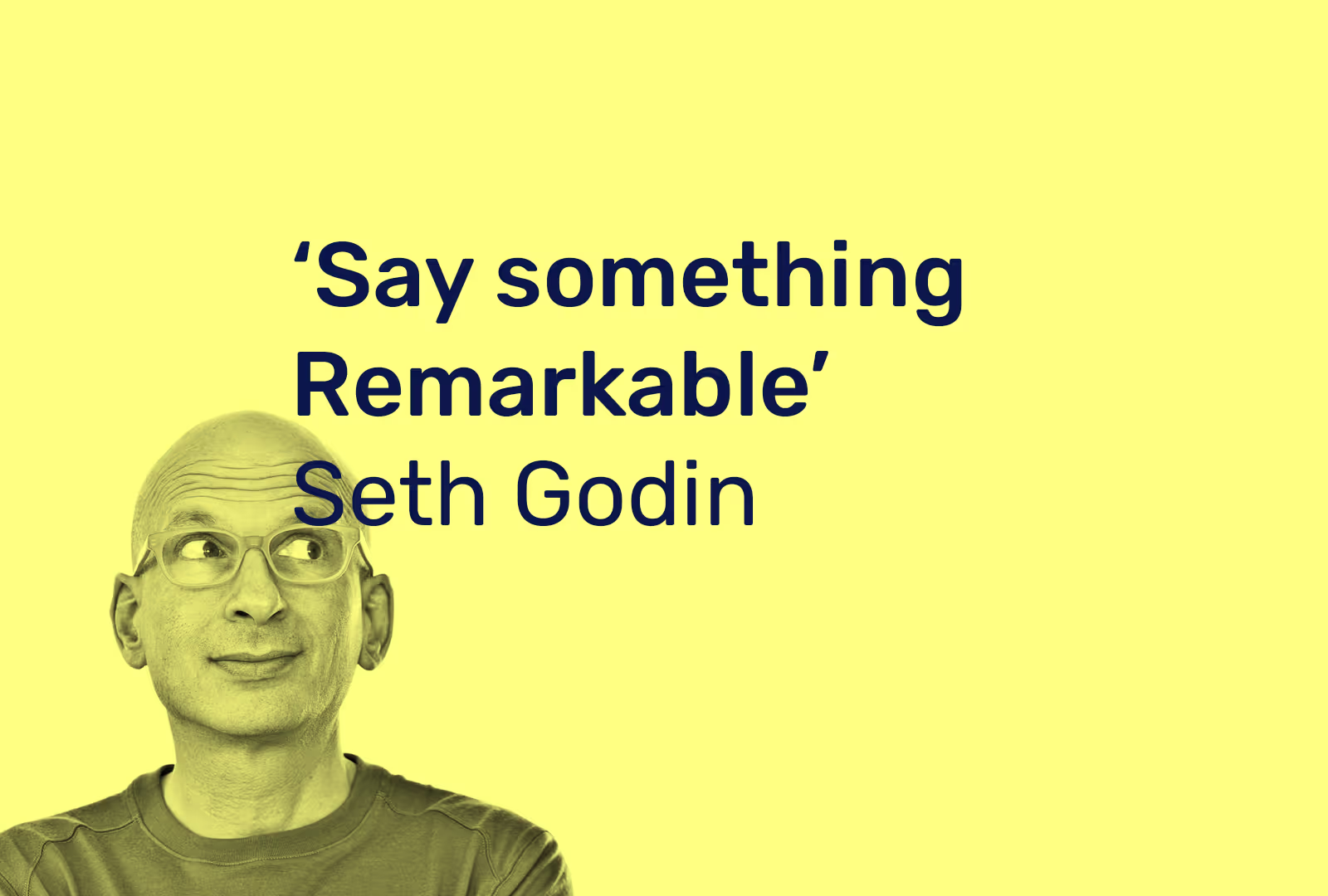Webinars That Are Worth Talking About
Inspired by Seth Godin’s “Is it remarkable?”

Seth Godin often asks: “Is it remarkable?” . But what is interesting is, he doesn't mean something should be spectacular or over the top, but simply: is it worth making a remark about?
That question is crucial for webinars. Because we all know the truth: the average audience is busy, distracted, and surrounded by endless streams of content. To stand out, your webinar has to deliver something that people remember, talk about, and share.
Let's have a look at how we can apply Godin’s principle to webinars in 2025:
1. Start with a bold hook
The first 60–90 seconds set the tone. Instead of easing in with introductions, begin with a surprising fact, a strong story, or a sharp promise. This instantly signals to your audience: this is worth my time.
💡 Example: “70% of webinar views happen after the live event, yet most teams design only for live.”
2. Give them something to say
A remarkable webinar isn’t measured by the number of slides, but by whether attendees can summarize the key idea in one sentence afterwards. Make your core message so clear, simple, and useful that people want to repeat it to colleagues.
💡 Ask yourself: If someone shares only one thing from this session, what should it be?
3. Create moments worth sharing
Design your webinar with “micro-moments” in mind, things that are naturally shareable. This could be a poll with unexpected results, a striking visual, or a quotable one-liner. These snippets give your audience reasons to engage during the session and to spread the word afterwards.
💡 A single poll result can become a LinkedIn post, extending your reach beyond the attendees.
4. Focus on transformation, not information
Information is everywhere. What’s remarkable is when you change how someone sees a challenge. Instead of dumping facts, frame the session around a shift in perspective.
💡 Example: Instead of “Top 10 webinar features,” make it “Why 3 simple changes will double your replay views.” It’s a transformation, not just information.
5. Follow through with value
Remarkable doesn’t stop when the session ends. Share the slides, highlight key takeaways, or send a recap article. Extend the lifecycle so your message continues to deliver value and spark conversations after the broadcast.
💡 Best practice: send a short “3 things you learned today” email within 24 hours.
6. Leverage On-Demand
Most views happen after the live event, yet many teams treat on-demand as an afterthought. Design your webinar so that the replay is just as engaging as the live version. Use chapters, embedded CTAs, and SEO snippets to make your webinar findable and usable long after the broadcast.
💡 Think of on-demand as your “flywheel”: the content that keeps working for weeks or months to come.
7. Be intentional with follow-up
Follow-up is where the real business value lies. Don’t send generic thank-you emails. Instead, tailor your follow-up based on engagement data: who asked questions, who clicked CTAs, who rewatched the replay.
💡 Segment your audience: leads get a personal touch, existing clients get resources, and internal stakeholders get insights.
Why It Matters for Corporate Teams
For corporate teams, being remarkable is about more than flashy production. It’s about delivering clear, memorable value that builds reputation, loyalty, and trust. In a crowded attention economy, the difference between just another webinar and one that sparks conversation is whether it’s remarkable.
👉 Ask yourself before every broadcast: Would someone tell a colleague about this? If yes, you’re on the right track.
